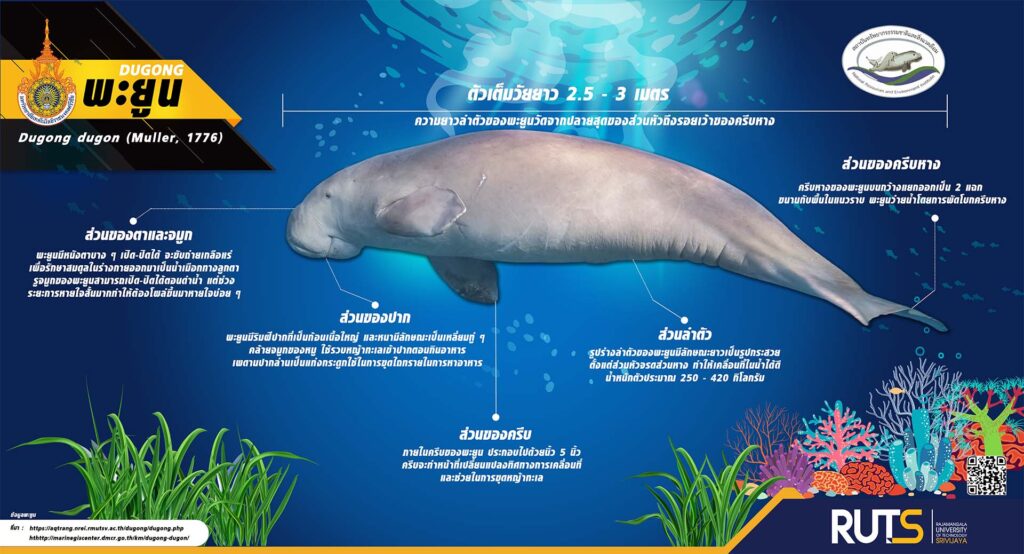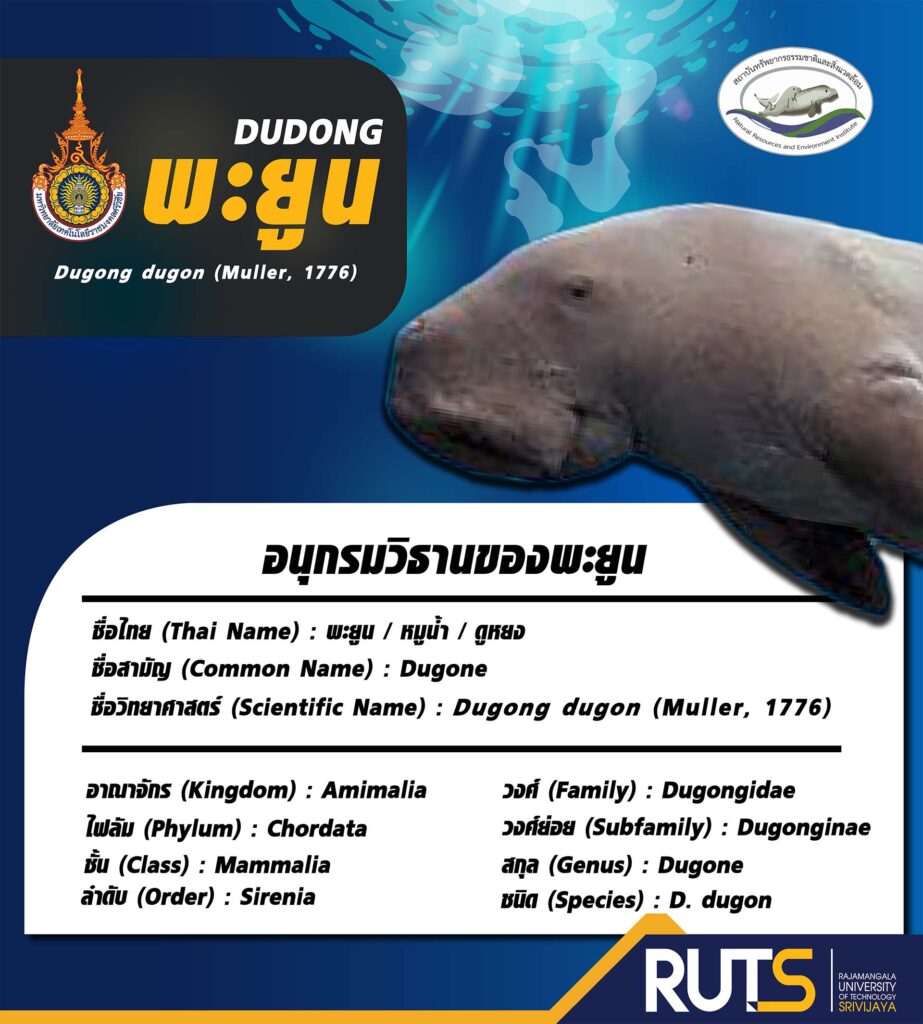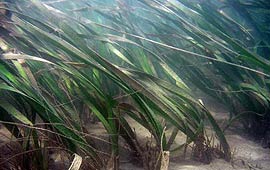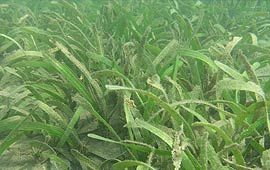Natural Resources and Environment Institute
Trang Aquarium
Rajamangala University of Technology Srivijaya Trang Campus


General information about dugongs
“Dugongs”
Dugongs are marine mammals that nurse their young with milk and live in the sea. It is believed that dugongs once lived on land and had ancestors similar to elephants. Approximately 55 million years ago, the dugong’s evolutionary line adapted to living in water and never returned to live on land, similar to dolphins and whales.
(Dugong dugon)
Dugongs have a streamlined body shape resembling that of a dolphin, with greyish to pinkish-grey or brownish-grey coloration. Their underside is lighter in color. Dugongs have short, sparse hairs along their body and dense, large bristles around their mouth. They possess small eyes and ears, with small, open ear holes and no ear flaps. Their nostrils are close together in a single pair, with a flap that can open and close. Dugongs breathe every 1-2 minutes and have front flippers on each side of their body, along with mammary glands located on the base of their flippers. Their front flippers have evolved from front legs and contain five digits each. Dugongs typically swim slowly at speeds of 1.8-2.2 kilometers per hour. They have heavy, dense bones adapted for their seagrass diet and do not possess defensive weapons. Their thick skin helps protect them from bites or harm from other animals such as sharks. Dugongs have a large body but lack external ears. Their young stay with their mothers and rely on them as a strong shield.
Dugong’s name
In some regions, it may be written as “Phayoon” or “Phayur,” depending on the spelling conventions used in various Thai dialects. Southern Thais often refer to dugongs as “Duyung” or “Tuuyung,” derived from the Malaysian language which is used for dugongs (Dugong, sea pig or sea pig) in our Thai writing. ” Phayoon” in some places may be written as ” Phayoon” or ” Phayur” depending on the spelling process. speakers use another name ” meaning or dugong is Thailand’s example other names fulfill similar role offer called whereas queryInterface
Trang
Dugongs have been widely conserved, with Koh Kra as the most heavily populated dugong habitat in Thailand. Dugongs became the conservation symbol of the province (flagship species) in 1996. In addition, dugongs were used as a national lucky charm for the 29th National Games, known as the “Dugong Games.” There are many sculptures or statues of dugongs, such as a pair of dugong sculptures at the entrance to the Marine Animal Museum at Rajamangala University of Technology Srivijaya, Trang Campus.
Here is the translation of the various names for dugong and their use as place names in Thailand
| Name | Province | District | Subdistrict | Name the village |
|---|---|---|---|---|
| Mu Duud | Chanthaburi | Tha Mai | Klong Khud | Ban Mu Dood ,Wat Mu Dood ,Ban Mu Dood School |
| Dugong | Rayong | Ban Chang | Pla | Ban Phayun ,Phayun Beach,Ban Phayun School |
| Dugong | Phatthalung | Pak Phayun | Pak Phayun | Pak Phayun Market |
| Du-yong | Krabi | Koh Lanta | Koh Lanta | Ban Lo Duh Yong |




Seagrass
General information about Seagrass
Seagrass ecosystems consist of flowering plants adapted to grow underwater, thriving particularly well in shallow, sunlit, brackish waters. Their complex leaf structures serve as crucial habitats and nurseries for marine organisms, supporting a diverse array of sea life including economically important species like fish, shrimp, crabs, and various shellfish. Seagrasses also play a vital role in water filtration and quality improvement, as their root systems prevent erosion and contribute to stabilizing sediment. These ecosystems are essential for preserving endangered marine species such as certain sea turtles and dugongs, which directly consume seagrass as part of their diet. Economically, seagrass beds support fisheries activities, including the collection of juveniles for aquaculture and various fishing practices such as crab and lobster trapping. Source : Marine and Coastal Resources Knowledge Base

(Halophila ovalis)

(Enhalus acoroides)

(Cymodocea serrulata)

Rajamangala University of Technology Srivijaya Trang Campus
179 Moo 3, Mai Fat Subdistrict, Sikao District, Trang Province 92150
Telephone to reserve a visit to the Aquarium
(Tel) : 098-016-1076
Email to reserve a visit to the Aquarium: nrei. ticket@gmail.com
